The art of licensing: how to sell your designs to market
Is it possible to earn a living from licensing your designs for use on consumer products? Lisa Hassell chats to industry insiders to find out.
Browse the aisles of any department store and the product of design licensing is visible. From designer coffee mugs to quirky tea towels, brightly coloured notebooks to stunning silk scarves and greeting cards – whether it’s home ware, textiles or paper goods, there’s little doubt that the trend for illustrated products is growing.
Whether you’re an established illustrator or just taking your first steps into the world of freelance work, selling your designs to buyers is an attractive prospect; one that offers increased visibility for your work and the opportunity to see your designs on the high street. But is there really big money to be made?
Having served as a director for the Association of Illustrators and with a successful career as an illustrator behind her, Helz Cuppleditch advises caution.
"Licensing can be a very lucrative area to work in, but it's rarely an overnight success as with most types of business," she says.
Cuppleditch regularly engages audiences at trade events, sharing her experience of design licensing - particularly the art of attracting clients; "Clients want to see something that fits with the trends and markets, yet is still unique enough to make it stand out from the crowd," she explains.
Happy compromise
Challenging though it may seem, refining your work to fit the needs of potential clients can actually be a happy compromise. As illustrator and business owner Sam Osborne observes: "There is nearly always a clever and creative way to approach a brief so that you feel happy and excited about the result."
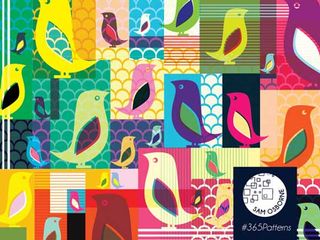
She adds: “Being open minded is so important, though it can be hard to let go of your own set ideas on what you'd like to see your work applied to.”
Get the Creative Bloq Newsletter
Daily design news, reviews, how-tos and more, as picked by the editors.
"An understanding of trends is very important," adds Cuppleditch, "together with an understanding of how different designs need to be suitable for lots of different products."
Getting your work seen
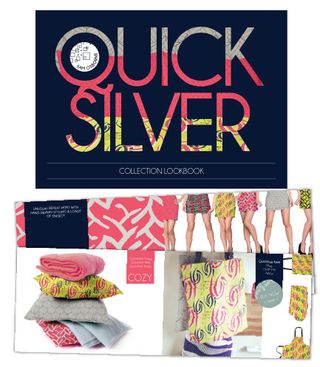
Presenting your designs professionally is imperative, and it’s important to take a focused approach to preparing your portfolio. "The practice of creating mock-ups can be very useful not just to potential clients but also to you as a designer," says Osborne, though she adds, "most licensors are used to translating designs in this way, so it’s not essential".
Osborne advocates the use of 'look books' for clients to download directly from her website. "I increasingly use them to showcase my work, especially surface pattern collections," she says. "Plus in terms of social media and blogs they’re very shareable.”
Attending trade shows
Cuppleditch believes that having a physical presence is crucial: "Licensing trade shows are the main way to attract clients. Just about every high street chain stores buyer, major manufacturer and smaller manufacturer visit these shows, meaning you have a captive, interested audience."
Far from being a cheap option, trade shows are incredibly expensive, but as illustrator Osborne observes, attending one as a visitor can be just as useful: “Knowledge of the depth and breadth of possibilities is important and it's constantly changing.” Researching the market is key, as she adds: “Keep your eyes open - observe products that use illustrations and patterns, especially ones similar to your style.”
Cuppleditch agrees, advising illustrators to do their research: “Illustrators need to find out the buyers names - some chain stores license artwork for products directly from designers
Attracting clients online
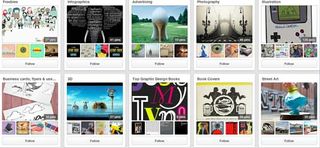
With buyers and clients relying heavily on the internet in their search for creative talent, a social media presence can be very effective. Tom Robinson, director of Handsome Frank Illustration Agency, has observed this migration. “Buyers often use Pinterest or Google images to find new and interesting work that's relevant to their target audience,” he says.
Derek Brazell observes that social networking also helps break down formal boundaries. “Networks like LinkedIn encourage a business like formality,” he says. "Though you may not always get a direct response by approaching clients in this way, try not to feel discouraged. Your name may be recognised later down the line, which may mean that you receive a bit more attention from that client.”
Robinson encourages illustrators to broadening their horizons: “Don't limit yourself to companies in your own country. Australia, US and Asia all have their own thriving greeting card markets and your work may be just right for one of them.”
E-courses
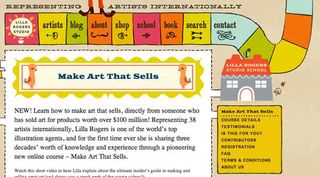
Developing your understanding of the market is also essential, and tapping into online resources such as Skill Share can provide much needed insight for beginners and established creative alike. Sam Osborne cites e-courses as a fantastic opportunity to build on your existing knowledge. “As a designer it’s incredibly important to feel comfortable dealing with the business aspect of what you do," she says. "Learning and continuing to learn should be a priority.”
Sam recently participated in the Lilla Rogers Make Art That Sells e-course to get to grabs with art licensing - a decision which she says has already begun to pay off. “I feel much more confident about my work, and the process of approaching and dealing with licensors and potential buyers,” she says.
Split into two parts, the course explores 10 of the most lucrative markets for artists including home décor, gifts, textiles, paper goods and children’s books. Participants are set weekly assignments to encourage their creative development and provide an opportunity to explore different ways of creating images, with regular critique and guidance from Lilla Rogers - an illustration agent from the U.S. In her first book I Just Like To Make Things, she offers these thoughts on licensing:
“Licensing is fantastic because you have the opportunity to sell your art to multiple companies in different categories and leverage income on your art’ says Rogers. Representing artists and illustrators internationally, her agency works with a growing list of buyers, she adds: “As you grow your success with a market, you’re able to build your clout. But it’s earned, not given from the outset”.
Getting paid
Royalties and one-off fees are terms you may already be familiar with – but what do they mean? Put simply, a royalty reflects your sales and a one-off fee is just that – quick cash for the work used.
Whilst royalties can be lucrative for some, it’s a misconception amongst illustrators that licensing is a sure-fire way to make a living as a designer. Cuppleditch advises keeping a second stream of income going as you’re starting out: “Most clients will work on a royalties basis which means after the initial advance, there is quite a wait for the income to start rolling in.”
One-off fees
Flat fees on the other hand, can offer reassurance, as Tom Robinson adds: “We would usually opt for the one-off fee, simply because you know how much you're going to get.”
Limiting the use of a license will also protect you in the event that your product sells particularly well: “You can specify a one-off fee and also limit the print-run to X items. Therefore if the product sells really well and a re-print is required you should receive an additional royalty fee”, before adding: “It's important to define all these things in writing and have it signed by your client.”
Conclusions
Knowing your place in the market, understanding the process and fine tuning your designs to suit clients needs will strengthen your chances of stepping into the world of licensing, whilst mastering the art of self promotion will ensure your artwork gets seen by the right people. However this is by no means a ‘get rich quick’ route for illustrators, as Robinson concludes:
“Licensing channels can be a great way to boost your income, but generally the revenue offered does not compare to a good advertising or design commission - something that all professional illustrators should be aspiring to.”
Words: Lisa Hassell
Further reading
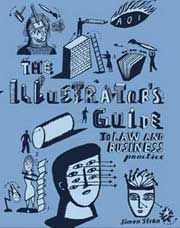
Published by the Association of Illustrators, The Illustrator’s Guide to Law and Business Practice explores many of the issues covered in this article in greater depth, including royalty agreements, negotiating fees, writing contracts and understanding copyright. (Non-members RRP £24.99/members RRP £19.99.)
Liked this? Read these!
- Up your publishing skills with these brilliant InDesign tutorials
- How to design a poster
- Useful and inspiring flyer templates

Thank you for reading 5 articles this month* Join now for unlimited access
Enjoy your first month for just £1 / $1 / €1
*Read 5 free articles per month without a subscription

Join now for unlimited access
Try first month for just £1 / $1 / €1
The Creative Bloq team is made up of a group of design fans, and has changed and evolved since Creative Bloq began back in 2012. The current website team consists of eight full-time members of staff: Editor Georgia Coggan, Deputy Editor Rosie Hilder, Ecommerce Editor Beren Neale, Senior News Editor Daniel Piper, Editor, Digital Art and 3D Ian Dean, Tech Reviews Editor Erlingur Einarsson and Ecommerce Writer Beth Nicholls and Staff Writer Natalie Fear, as well as a roster of freelancers from around the world. The 3D World and ImagineFX magazine teams also pitch in, ensuring that content from 3D World and ImagineFX is represented on Creative Bloq.




